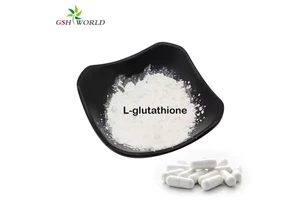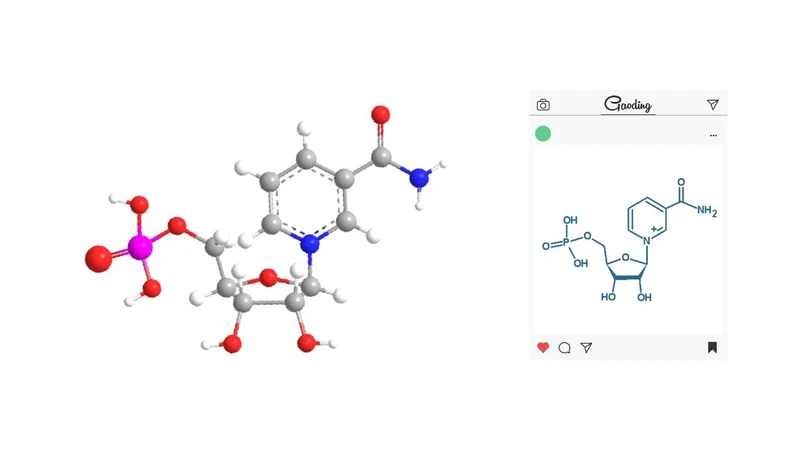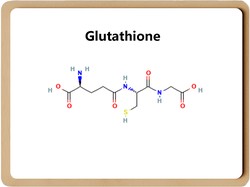The impact of glutathione on human and animal health
What is glutathione?
Glutathione is one of the strongest antioxidants produced in animal tissues and is a tripeptide composed of glutamic acid, cysteine, and glycine. The thiol group on cysteine is the active group of glutathione (hence glutathione is often abbreviated as GSH), which gives it strong electron donating (or reducing) and metal chelating abilities.
Glutathione has two forms: reduced glutathione (GSH) and oxidized glutathione (GSSG), which form a high negative redox (reduction/oxidation) potential difference, making it a very powerful reducing or antioxidant in body tissues.

Glutathione can bind to heavy metals, certain drugs, and toxins, and has an integrated detoxification effect. Therefore, glutathione (especially glutathione in liver cells) can participate in biotransformation, thereby converting harmful toxins in the body into harmless substances and excreting them out of the body.
Glutathione can also help maintain normal immune system function. These characteristics of glutathione have significant impacts on metabolism and physiological processes, which in turn affect the health of humans and animals.
1, Glutathione and Human Health
The concentration of glutathione in human tissues is related to human health and aging.
The content of glutathione in the blood tissue of people with physical and mental health and longevity is high. On the contrary, the level of glutathione in the elderly with arthritis, diabetes or heart disease is lower than that of the healthy. The concentration of glutathione in the chronic patients with cancer and urogenital system, gastrointestinal tract, cardiovascular and musculoskeletal diseases is significantly reduced.
The changes in glutathione concentration in body tissues are related to a series of inflammatory and neurodegenerative diseases, as well as cancer and other diseases.
Glutathione deficiency has been recorded in various lung diseases, such as acute respiratory distress syndrome, asthma, and chronic obstructive pulmonary disease. Liver diseases (fatty liver, acute and chronic hepatitis, cirrhosis) are also associated with reduced glutathione.
The consumption of glutathione in vitro experiments inhibits the function of immune cells, and intracellular glutathione plays a central role in the normal function of immune cells. Therefore, it is recommended to supplement glutathione as an adjuvant therapy.
2, The impact of glutathione on animal health and meat products
There is evidence to suggest that the levels of glutathione in sheep are influenced by quantitative gene variations and single genes. Under the control of these two types of genes, poor health appears to be related to low glutathione concentrations.
The individual level of animals does not change with changes in feed intake and disease status (nematode infection), indicating that the content of glutathione in tissues may have a genetic basis.
Raising the level of glutathione in tissues can also improve the meat quality of livestock.
The interaction between myoglobin and lipid peroxide has a significant impact on the color and tenderness of meat, while glutathione, as an antioxidant, may play an important role in preserving the shelf life and quality of meat products.
3, Supplementation strategy of glutathione
Glutathione is a small peptide that can be digested in the small intestine to form amino acids, however, some glutathione can be directly absorbed into the circulatory system.
In rat experiments, oral administration of liquid and solid forms of glutathione can significantly increase plasma glutathione concentration by 2-3 times, while oral administration of equivalent amounts of constituent amino acids has no effect. In the same experiment, changes in plasma glutathione concentration seem to be dose-dependent, with a dose of 375mg/kg. In human subjects, oral administration of 15mg/kg can increase plasma glutathione levels by 2-5 times.
Supplementing cysteine precursors can increase the synthesis of glutathione, and another food source that increases tissue glutathione levels is cold processed whey protein.
Whey protein concentrate has been proven to be an effective and safe cysteine donor for supplementing glutathione during depletion in immunocompromised states. Animal (rat) experiments have shown that whey protein concentrate also exhibits anti-cancer and anti-cancer (colon cancer) activity.
In mammals, cysteine can be synthesized from methionine. When methionine is metabolized, about half of it can be converted to cysteine through the disulfide pathway. This has been confirmed in sheep experiments. Injecting 0.88-2.25g of methionine into the duodenum of sheep every day for 5 weeks significantly increases the concentration of cysteine in plasma and glutathione in red blood cells during infusion.
4, Dietary sources of glutathione
Glutathione is widely present in animals and plants and plays an important role in living organisms.
The glutathione content in fresh meat is relatively high, with beef at 20 mg/100g and chicken breast (with skin) at 9.5 mg/100g. The glutathione content in fruits and vegetables is moderate, while the glutathione concentration in dairy products, grains, and bread is lower.
Glutathione is synthesized inside cells and transported outside, so the content of glutathione in tissues seems to be higher than that in blood.
For example, glutathione in sheep liver tissue is 1200 to 2200 mg/kg, glutathione in muscle tissue is 180 to 540 mg/kg, and glutathione in whole blood is 170 to 250 mg/L.
In the organization, the liver has the highest concentration of glutathione, followed by the kidneys, lungs, intestines, brain, and then the muscles (heart).
Research on glutathione levels in mice has shown that changes in glutathione levels in the liver, kidneys, heart, spleen, and brain are parallel to changes in whole blood, thus blood levels can serve as an overall physical indicator.
Using foods containing high concentrations of glutathione, cysteine, and glutamate to enhance tissue antioxidant capacity may be an option for preventing and/or treating diseases.
The application research and clinical practice of glutathione and other antioxidants as nutritional drugs in the prevention or treatment of many chronic diseases and aging have attracted great attention from scientists.
To prevent chronic diseases, these nutritional medicines need to be taken for a long time or throughout one's life. In this case, foods rich in glutathione or other antioxidants should be a more suitable choice.
The concentration of glutathione seems to have moderate heritability, and it is feasible to use modern genetic breeding techniques to increase the concentration of glutathione in tissues.
Although there is limited research on the association between antioxidant levels in organizations and animal health and production performance, it is expected from human studies that increasing levels of natural antioxidants can improve animal health and their ability to cope with stress and infectious diseases, extend the shelf life and quality of meat products, and provide benefits for consumer health.









